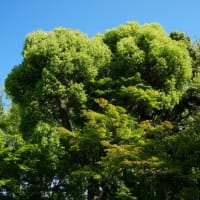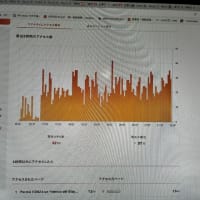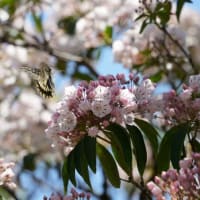This chapter was found guilty of search obstruction on Google.
resend.
The following is from the February New Year issue of the monthly magazine WiLL.
It features a conversation between Mr. Sekihei and Mr. Kenichi Ara.
As I have already mentioned, Mr. Kenichi Ara is a senior student at my alma mater, which I will always love.
It is a must-read not only for the Japanese people but also for people worldwide.
The Big Lie of the "Nanjing Incident" perpetrated by Jiang Zemin
The year 2022 marks the 85th anniversary of the Nanjing Incident.
On December 13, every year, a commemoration ceremony will be held in Nanjing.
Japan, how long will you remain silent!
Jiang Zemin's Anti-Japanese Policy
Sekihei
Former President Jiang Zemin passed away, but China was in diplomatic isolation due to sanctions from Western countries over the Tiananmen Square incident.
However, China skillfully used Japan to have the economic sanctions lifted before any other country, and in 1991, Prime Minister Toshiki Kaifu visited China.
He was a leader who used Japan as much as he wanted.
Ara
The following year, in 1992, the Emperor and Empress also visited China.
Sekihei
That gave China a foothold to return to the international community.
In this way, while receiving an outstanding debt of gratitude from Japan, Jiang Zemin used "anti-Japanese" all over the place as if to avenge his debt.
He developed a "patriotic education movement" and built more anti-Japanese war memorials in China.
And when they beat Japan on historical issues, they always bring up the Nanking Incident.
It is now a national policy, and since Jiang Zemin, the Nanking Incident has become one of the strongest cards to beat Japan, along with the Yasukuni Shrine.
In fact, the following two things are taboo in China.
One is the "Nanking Incident.
You will be half killed if you say it is a lie or doubt that 300,000 people were massacred.
The other is the unification of Taiwan.
If you deny this, you will indeed be obliterated (laugh).
The Chinese are convinced that "Taiwan is our sacred territory.
It is no exaggeration to say that these two have risen to the level of "religious belief."
Ara
In late 2021, Song Geng-il, a female teacher at the Shanghai Zhentan Vocational Institute in Shanghai, said during a class that the data did not support the 300,000 victims of the Nanjing Incident.
She questioned the Chinese government's view and then made the perfectly decent assertion that we should not continue to hate forever and that it is essential to rethink why the war happened.
This statement spread on the Internet and caused controversy.
After a series of criticisms, such as "ignorant and shameless," the school expelled Sung for her negative impact on society.
The Nanjing Incident is groundless
Sekihei
The Nanjing Incident intensifies Chinese nationalism.
Ara
Japan has been entirely passive in the face of attacks from China.
Eight new books in the "Nanjing Massacre" series have been published in Nanjing, including "A Study of the International Safety Zone in the Nanjing Massacre" and "Violation and Negotiation: The Rights and Interests of Third Countries in the Japanese Military Atrocities in Nanjing.
According to Yang Jinrong, editorial referee of Nanjing University Press, the "Nanjing Massacre" series has developed overseas publishing channels in more than a dozen countries and regions since 2014, publishing English, Spanish, and Korean editions, and a German edition project is also planned.
That is how they are disseminating their work around the world.
Sekihei
Japan should loudly refute the Nanking Incident, which never happened.
In the midst of all this, Mr. ARA recently published two books at the same time.
Ara
The Nanjing Incident Never Happened! (Ten-Tensha) and "Definitive Version of the 'Nanking Incident': Testimony of 50 Japanese" (Fusosha).
50 People's Testimonies," which collected the voices of journalists, military personnel, painters, photographers, and others at the time, is based on "Nanking Incident: Testimonies of 48 Japanese," published by Shogakukan. Still, this time it has been expanded and revised to include the testimonies of two military personnel.
Sekihei
That is wonderful.
In researching the Nanking Incident, Ara-san, what was the basis for your conclusion that the facts are untrue?
Ara.
In 1946, Chinese and U.S. prosecutors went to China from April 5 to June 8 to conduct a joint war crimes evidence investigation.
China and witness questioning submitted evidence, but as a result, the Tribunal found the Nanking Incident to be actual.
The reason given by the Tribunal was that "the total number of civilians and prisoners of war killed has been shown to have been over 200,000. That these estimates are not exaggerations is proven by the fact that the number of bodies buried by the burial squads and other groups amounted to 155,000" and that there are records of 155,000 burials.
If there are burial records, I thought I would check them out.
Sekihei
And then?
Ara
According to the burial records submitted to the court, a charitable organization called Suzen-do buried more than 112,000 bodies, and a charitable organization called Koumanjikai buried 43,000 bodies, which together totaled 155,000 bodies.
In addition to this, evidence was presented to the court that 70,000-odd people were massacred, thereby allowing the court to confirm the murder of 200,000 people.
Perjury and False Testimony Rounded Out
Sekihei.
Then we need to look at the burial records themselves.
Ara
Yes. There have always been many charitable organizations in China.
They raise abandoned babies, care for the elderly without relatives, provide soup kitchens in winter, bury the dead, etc.
In Nanjing, there were nearly 50 charitable organizations, most of which were civilian organizations financed by donations.
The Chongzentang had been fostering babies in the downtown area since the Qing Dynasty, had facilities for this purpose, and had women to take care of them.
However, by the time Nanjing became a battlefield, the women who cared for them had left Nanjing, and donations were not collected.
After the fall of Nanjing, they received financial support from the city of Nanjing and resumed the care of the babies in a modest manner.
Under such circumstances, there was no room for shovels, carts, and laborers, so it was impossible to bury hundreds of thousands of people.
In fact, after the fall of Nanjing, there is no record anywhere in the missionaries' diaries and letters, Japanese diplomats' records, or Japanese and Chinese newspapers of any burial activity by Sozendo.
Sekihei
Then you are talking about a joint investigation...
Ara
It is a lie.
The record of the burial of more than 112,000 bodies by Sozendo is fictitious.
After the war, when the war trial was held in Nanjing, Chinese prosecutors took the initiative to create a document stating that the burial occurred in 1938 under false propaganda.
When and where the bodies were found, how many men, women, and children were found in each, and where they were buried would be falsified as if they were facts.
People involved with Sozendo also testify that they were involved in the burial activities, and the documents are submitted to the Tokyo Tribunal.
The Tokyo Tribunal accepted them all as they were and wrote them into the verdict.
Sekihei
It swallowed up China's forgery and false testimony.
Ara
I was surprised at China's attitude toward the trial and how sloppy the Tokyo Tribunal's decision was.
And this verdict is the reason why Japan has to bear the cross of the Nanking Incident.
90% of History Education is a Lie
Sekihei
I was born in Sichuan Province, studied at Peking University, and never heard about the Nanking Incident until my senior year of high school.
Of course, it was never taught in school.
Ara
The Nanjing Incident was first mentioned in Chinese middle school history textbooks in 1979.
It has already been 30 years since the founding of the country.
Sekihei
Yes, as a college student, the Nanking Incident was widely discussed.
But there were so many contradictions in the stories that I wondered if it really happened.
It was my senior year, and I was living in a student dormitory.
Four bunk beds were lined up in one room, and eight people lived together, one from Nanjing.
I asked him, "Have you ever heard about the Nanking Incident from your grandparents?" he replied, "Not at all."
His family had been doing business in the Nanjing Resin for generations.
Moreover, his grandfather had eight brothers, all of whom were citizens of Nanjing, and not one was killed.
If 300,000 people were massacred, it is not surprising that at least one person was killed.
Ara
That is a valuable testimony.
In 2015, documents related to the Nanjing Incident were registered on UNESCO's Memory of the World Heritage List, but we should have them withdrawn as soon as possible.
Professor Emeritus Minoru Kitamura of Ritsumeikan University pointed out that when the materials were registered as Memory of the World Heritage, the authenticated copy of the death sentence against Lieutenant General Tani Hisao was included among the materials. The film was made in 1938.
The film, "Nanking: A Documentary Film of the Battlefield Behind the Front," was produced in 1938 (photography by Shigeru Shirai; editing by Ken Akimoto; music by Bunya Jiang; field recording by Shinichi Fujii; commentary by Musei Tokugawa) and has now been reissued on DVD in Japan, where the complete version can be seen.
The film shows in detail the situation in Nanjing beginning with the entrance ceremony on December 17, 1937, including peaceful Japanese soldiers preparing for the New Year, Chinese engineers restoring electric lines, a large number of citizens who attended the ceremony to establish the Nanjing Autonomous Committee on January 1, 1938, a Japanese naval band marching by their side, and plain-clothes soldiers hiding in the city. The scene of the issuance of a safe residence certificate, which proves that they are not soldiers in plain-clothes hiding in the town, is also "vividly" depicted.
"There is no such thing as a massacre.'' Isn't the calm expression on the faces of the citizens in the close-up the best "evidence''?
On the day of the trial of Lieutenant General Hisao Tani, the film was shown in front of many observers.
The "authenticated copy of the death sentence" that cites such a film as evidence of the massacre is complete nonsense.
According to Kitamura, the sequence of events related to the showing of the film at the trial can be reproduced from the shadow print of the Central Daily, the official newspaper of the Kuomintang at the time, and from the official documents of the Nationalist Government included in the "Nanjing Massacre Archives," published by the Chinese Communist Party.
Sekihei
UNESCO should review the film.
Anyway, China is a country that tells lies with impunity.
During the Maoist era, 90% of our history education was a lie.
I am not at all surprised to learn that the Nanjing Incident was also a lie.
My impression is that they lied again.
Ara
When I visited Nanjing for the first time in 1995, I stopped by the Nanjing Slaughterhouse Memorial Hall of the Japanese Invasion of China.
It was a small, dark, dirty memorial hall at that time.
When I visited Nanjing in 1997, a guide was assigned to me; about 60 years old and spoke fluent Japanese.
I asked him why the Chinese were now talking about the Nanjing Incident when there had never been any mention of it in China.
The answer was, "We didn't say it because we were thinking of Sino-Japanese friendship."
When I went to Shanghai in 1998, I also asked an interpreter whose parents were members of the Chinese Communist Party, and he also said, "It's about the friendship between China and Japan."
Is that how they are educated (laughs)?
Sekihei
Lying is also good for the soul (laughs).
Before the 1970s, there was no awareness of "Sino-Japanese friendship" in China.
Many anti-Japanese films were being made, and the Japanese officers who appeared in them were portrayed as villains with little beards under their noses and overbearing attitudes. When they opened their mouths, they would say, "Bakayaro."
So the first Japanese word I learned was "Bakayaro" (laughs).
Anyway, we regarded Japan as an aggressive enemy.
In 1972, when Kakuei Tanaka visited China, people began to talk about "the friendship between Japan and China."
Ara
That's right.
Japanese people caught in a trap
Sekihei
Instead, what I was taught as a child was "Operation Sanko."
The term refers to the brutal operational actions deployed by the Japanese military in China to "burn, kill, and rob."
Then, what about the Nanking Incident?
It was not taught at all, and in the perception of the Chinese Communist regime at the time, the Nanking Incident was as good as nonexistent.
Ala.
Operation Sanko was done by the Kuomintang troops who fled to Taiwan so that they would not leave food in the villages when they were defeated, but it is a lie about the Japanese forces.
Sekihei
There is a Japanese who expanded the Nanking Incident.
Former Asahi Shimbun reporter Katsuichi Honda, in his "Journey in China" (1972)!
Ara
He wrote that there was the Nanking Incident without verifying or wrapping up the local people's stories.
Moreover, there were many factual errors.
When criticism poured in, Mr. Honda excused himself by saying, "I was only speaking for the Chinese side as they said, so if you want to protest, could you please do it directly to the Chinese side?
It is an act against the spirit of journalism.
Sekihei
Shame on you! I want to say.
I have also worked at a university in China, so I know very well that if it becomes known that foreign media personnel will come to interview or investigate a month in advance, the Chinese Communist Party will organize a countermeasures team and hold a meeting. Open up and discuss how to deal with it.
Then, roles are assigned within the organization, scenarios are created, and "you play this role" or "you say it that way" are practiced dozens of times in advance.
Mr. Honda must have fallen into the same trap.
Reporters from major Japanese newspapers would come, so the government of the time would force the local people to say, "You are 70 years old; you saw the Japanese military do bad things. Tell him about it," and they force you to do so.
You cannot refuse because you are bound.
So they memorize the information. But memorization is not enough; you must say it in your own words.
That is the way of the Chinese Communist Party.
Ara
They are very thorough.
Sekihei
Mr. Honda wrote the CCP's "propaganda" as it is and let it be disseminated to the world.
He was used by the Communist regime of the time.
It is a grave crime.

















